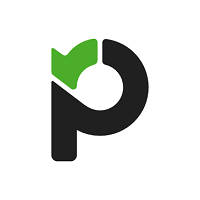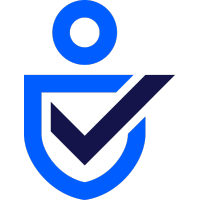Description

AI TimeClock

ProHance
Comprehensive Overview: AI TimeClock vs ProHance
AI TimeClock and ProHance are workforce management solutions designed to enhance productivity and efficiency in organizations by providing detailed insights into employee activities, time management, and operational workflows. Below is an overview of each product, including their primary functions, target markets, market share, user base, and key differentiating factors.
AI TimeClock
a) Primary Functions and Target Markets
Primary Functions:
- Time Tracking: Automates timekeeping, capturing work hours with accuracy.
- Attendance Management: Monitors employee attendance, leaves, and schedules.
- Productivity Insights: Provides analytics on task durations and productivity levels.
- Compliance and Reporting: Ensures labor law compliance and generates reports.
Target Markets:
- Small and medium-sized businesses (SMBs) looking for straightforward time-tracking solutions.
- Industries such as healthcare, retail, hospitality, and professional services.
- Remote teams requiring reliable time-tracking mechanisms.
b) Market Share and User Base
AI TimeClock has carved out a niche in SMBs, particularly those seeking simple, cost-effective solutions. Its market presence may not be as expansive as some larger, more established platforms, but it maintains a loyal user base due to its ease of use and affordability. The user base is typically smaller organizations or individual teams within larger enterprises.
c) Key Differentiating Factors
- User-Friendliness: Known for an intuitive interface that caters to non-technical users.
- Cost-Effectiveness: Offers competitive pricing suited for small businesses with budget constraints.
- Focus on Time Management: Primarily emphasizes core functionalities around time and attendance without extensive additional features.
ProHance
a) Primary Functions and Target Markets
Primary Functions:
- Comprehensive Workforce Analytics: Delivers in-depth insights into operations and employee productivity.
- Process Optimization: Identifies inefficiencies in workflows and suggests improvements.
- Workload Management: Balances workloads across teams for optimal output.
- Remote Work Management: Supports hybrid and remote working models with robust tracking tools.
Target Markets:
- Medium to large enterprises seeking detailed productivity and operational analytics.
- Industries such as IT, BPO, finance, and consulting with complex workflow requirements.
- Companies with remote or distributed teams needing sophisticated management tools.
b) Market Share and User Base
ProHance has established a strong presence in larger organizations and enterprises that require extensive and customizable productivity solutions. Its client base includes major corporations and global enterprises, making it a prominent player in the workforce management tools market. The user base primarily consists of teams with layered and diverse operational needs.
c) Key Differentiating Factors
- Advanced Analytics: Offers a deeper and broader set of analytical tools compared to basic time tracking solutions.
- Scalability and Customization: Designed to scale with business growth, providing tailored solutions for complex requirements.
- Integration Capability: Easily integrates with other enterprise systems and tools, enhancing its utility in diverse IT environments.
Comparison Summary
Market Approach:
- AI TimeClock focuses on simplifying time tracking for smaller businesses, emphasizing ease and cost.
- ProHance targets a more extensive enterprise market, with necessitated demand for in-depth analytics and integration.
Functionality:
- AI TimeClock provides essential time and attendance tracking with simplicity.
- ProHance offers expansive features including advanced analytics and operational insights, catering to the needs of larger organizations.
Overall, while both products serve to improve workforce management, they are positioned to meet the divergent needs of different market segments and organizational complexities.
Contact Info

Year founded :
Not Available
Not Available
Not Available
Not Available
Not Available

Year founded :
2010
Not Available
Not Available
India
http://www.linkedin.com/company/prohance-09
Feature Similarity Breakdown: AI TimeClock, ProHance
When comparing AI TimeClock and ProHance, two platforms generally used for workforce management and productivity tracking, it's essential to analyze their core features, user interfaces, and any unique characteristics or functionalities that set them apart.
a) Core Features in Common
-
Time Tracking:
- Both platforms offer comprehensive time tracking capabilities, allowing organizations to monitor when employees start and stop work.
-
Productivity Analysis:
- Both solutions provide tools to analyze productivity, offering reports and insights into employee performance based on collected data.
-
User Activity Monitoring:
- They include features for tracking user activity to understand how work hours are spent.
-
Reporting and Analytics:
- Both platforms provide reporting and analytics tools to help managers make data-driven decisions.
-
Integrations:
- Integration capabilities with other tools and platforms like payroll and project management software.
b) User Interface Comparison
-
AI TimeClock:
- Generally features a straightforward, minimalist design. Its interface is often praised for being user-friendly, making it easy for employees to clock in and out.
- The focus tends to be on efficiency, with quick access to essential time-tracking and reporting features.
-
ProHance:
- The interface can be slightly more complex, offering a broader range of features and customization options. This can provide a steeper learning curve for new users.
- ProHance often features more data visualizations, aiming to offer a more detailed view of productivity metrics.
c) Unique Features
-
AI TimeClock:
- AI-powered Insights: AI TimeClock might leverage AI to provide smarter reports and predictive insights, suggesting future trends or identifying anomalies in time usage.
- Flexible Clock-in Options: May offer various methods for clocking in and out, such as mobile apps, web-based systems, or biometric systems, enhancing accessibility and security.
-
ProHance:
- Detailed Workflow Analysis: ProHance might offer more granularity in workflow management, providing insight into specific tasks and processes within a project.
- Real-time Analytics: Often allows for more real-time analysis of productivity data, giving managers tools to make immediate decisions.
- Cognitive Analytics: May include cognitive analytics features that help in understanding the behavioral aspects of productivity and performance.
Conclusion
While both AI TimeClock and ProHance cover the essentials of time tracking and productivity analysis, they differ in their approach and unique offerings. AI TimeClock may focus more on ease of use and AI-driven insights, while ProHance provides in-depth workflow and cognitive analytics, appealing to organizations that require detailed productivity analysis and are willing to navigate a more complex interface.
Features

Reporting
Integration & Compatibility
Accurate Payroll Integration
User-Friendly Scheduling
Insightful Reporting
Time Tracking
Smart Time Tracking

Operational Efficiency
Employee Engagement
Productivity Tracking
Reporting and Analytics
Best Fit Use Cases: AI TimeClock, ProHance
AI TimeClock and ProHance are tools designed to enhance productivity and resource management, but they cater to different needs and business environments. Here’s a look at their best-fit use cases:
AI TimeClock
a) Best Fit Use Cases for Businesses or Projects:
-
Small to Medium-Sized Enterprises (SMEs):
- AI TimeClock is ideal for SMEs that require a straightforward and automated approach to time tracking. It offers a simple setup and usage that doesn’t overwhelm smaller teams while providing essential insights into employee work patterns.
-
Remote and Hybrid Work Environments:
- Companies with a remote or hybrid workforce benefit from AI TimeClock’s ability to auto-track time without intrusive measures. It efficiently logs work hours, accommodating flexible work arrangements, and helps in managing remote employee productivity.
-
Freelancers and Consultancy Services:
- Freelancers and consultancies often need precise time tracking to bill clients accurately. AI TimeClock provides detailed data on hours worked, making it easier to create invoices and justify billed time to clients.
-
Project-Based Teams:
- For project-centric teams, AI TimeClock offers valuable insights on how time is distributed across various tasks, enabling better project management, schedule adherence, and productivity analysis.
ProHance
b) Preferred Use Cases and Scenarios:
-
Large Enterprises and Corporations:
- ProHance is preferred for larger organizations that handle complex operations. Its comprehensive suite offers advanced analytics and insights into workforce productivity across different departments and hierarchies.
-
Industries with Detailed Process Flows:
- Industries such as manufacturing, healthcare, IT services, and BPOs can benefit significantly from ProHance due to its capability to map, model, and monitor intricate workflows and processes, thereby optimizing operational efficiency.
-
Operational Scalability Needs:
- Businesses looking to scale their operations will find ProHance advantageous as it provides tools for performance benchmarking, resource allocation, and scenario planning, essential for growth strategies.
-
Compliance and Governance Focus:
- Organizations that must adhere to strict regulatory standards and require detailed audits of employee activity will find ProHance’s robust reporting and compliance monitoring beneficial.
d) Catering to Industry Verticals and Company Sizes:
-
AI TimeClock:
- Generally targets smaller companies or teams looking for ease of use, minimal setup, and efficient basic time management. It is versatile enough to cater to various verticals that do not require extensive data but need reliable time tracking for productivity insights.
-
ProHance:
- ProHance caters to large-scale enterprises and specialized industries needing in-depth analysis and management tools. It is scalable to meet the demands of diverse verticals like finance, healthcare, IT, and manufacturing, where detailed data points and optimized resource allocation are crucial for maintaining competitive advantage.
Both AI TimeClock and ProHance enhance operational transparency but are differentiated by their complexity and the depth of analytics they offer, thus aligning with company needs based on size, structure, and industry-specific requirements.
Pricing

Pricing Not Available

Pricing Not Available
Metrics History
Metrics History
Comparing undefined across companies
Conclusion & Final Verdict: AI TimeClock vs ProHance
Conclusion and Final Verdict for AI TimeClock vs ProHance
When evaluating AI TimeClock and ProHance, both are competent in their spheres, offering unique features tailored to enhancing productivity and time management. However, the decision on which product provides the best overall value depends on the specific requirements and context of use for the business or individual.
a) Best Overall Value
Considering all factors like functionality, ease of use, customization, support, cost, and integration capabilities, ProHance generally offers the best overall value for larger enterprises seeking comprehensive workforce analytics and productivity management tools. ProHance's ability to provide detailed insights across multiple processes and its robust analytics tools make it a superior choice for organizations that need extensive monitoring and analysis capabilities.
On the other hand, AI TimeClock might be a better value for small to medium-sized businesses or sole proprietors who need a more straightforward, intuitive time-tracking solution without the need for detailed analytics, offering a cost-effective solution with easy implementation.
b) Pros and Cons of Each Product
AI TimeClock
-
Pros:
- User-friendly interface with straightforward implementation
- Cost-effective, ideal for smaller businesses
- Essential features like time tracking and basic reporting
- Easy integration with productivity tools and platforms
-
Cons:
- Limited in-depth analytics and reporting features
- May not cater to complex enterprise needs
- Fewer customization options compared to more robust systems
ProHance
-
Pros:
- Comprehensive analytics and reporting capabilities
- Highly customizable to suit diverse enterprise needs
- Excellent for detailed workforce management and productivity tracking
- Scalable for larger organizations with complex operational structures
-
Cons:
- Steeper learning curve due to advanced features
- Higher cost, which may not be suitable for smaller businesses
- Might require more time for setup and integration
c) Recommendations
For users deciding between AI TimeClock and ProHance, consider the following recommendations:
-
Assess Needs and Scale:
- If your business requires basic time tracking and you’re looking for a cost-effective solution with a quick implementation, AI TimeClock is suitable.
- If you’re managing a large team and require advanced analytics and detailed productivity reports, ProHance is the better choice.
-
Budget Consideration:
- Small and mid-sized companies should weigh the cost benefits against the need for advanced features. AI TimeClock provides excellent value for smaller budgets.
- Enterprises that can allocate more resources to productivity management will benefit from ProHance’s extensive capabilities.
-
Integration and Scalability:
- Consider the existing tools and systems you presently use. Choose AI TimeClock if you need light integration with simple systems.
- Choose ProHance if you anticipate growth requiring scalable solutions that fit into complex environments.
By understanding your business’s specific requirements, leadership goals, and workforce dynamics, the decision can tilt towards the solution that strategically aligns with your long-term productivity and management objectives.
Add to compare
Add similar companies




